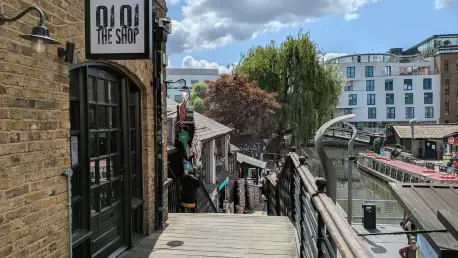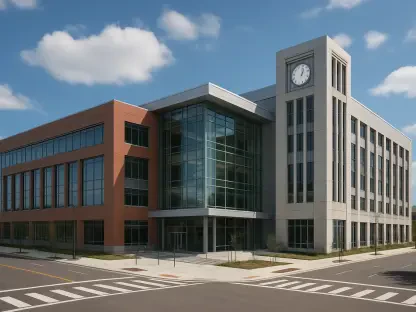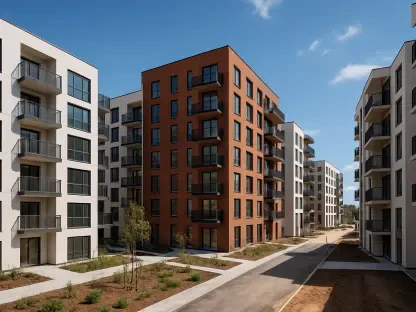The housing crisis in London continues to be a pressing concern, with ever-escalating rents and a lack of affordable options leaving many residents in a predicament. Despite various government schemes and policies aimed at addressing this issue, the scarcity of affordable, quality housing persists. The newly intensified focus on Build-to-Rent (BTR) comes at a crucial juncture, promising to provide much-needed relief to those caught between public housing and unaffordable private rents. Spearheaded by initiatives like Petermans Housing Initiative (PHI), this segment of the real estate market is designed to bridge existing gaps, targeting the so-called ‘missing middle’—those whose income levels disqualify them from social housing yet are insufficient to meet high private rent demands. The BTR model offers an opportunity not only to increase the volume of housing but also to ensure that these homes meet the current and future needs of London’s diverse population, contributing to long-term urban regeneration.
Addressing the ‘Missing Middle’
PHI aims to confront the challenges faced by individuals who find themselves ineligible for social housing programs yet unable to afford market rates for renting. This demographic has often been overlooked in housing strategies, resulting in a significant market gap. PHI’s approach is distinct and centers on providing tailored solutions that cater to this specific group. The initiative works by collaborating closely with private landlords to secure long-term housing options. This involves employing innovative services, such as tenant guarantor frameworks, which act as a safety net for renters who might otherwise struggle to secure a lease. Furthermore, PHI’s strategy relies heavily on fostering partnerships with local authorities, housing associations, and charities to create and maintain a unified approach to these issues. These collaborations are intended to ensure both the availability and appropriateness of housing by aligning the development of new properties directly with community needs, making them more accessible to middle-income earners.
By streamlining the process from site identification to lease management, PHI leverages its extensive industry experience to effectively fulfill housing needs. This method promises significant advantages, such as speeding up housing delivery and improving the suitability of rented properties. Moreover, PHI emphasizes creating homes that are designed with users in mind, employing layouts and facilities that acknowledge contemporary living requirements. By teaming up with developers who share their vision, PHI is positioned to generate housing solutions that not only reflect present-day demands but also anticipate future shifts in living standards. Ultimately, this integrated approach aims to foster a stable and supportive community ambiance. This endeavor is not merely about increasing stock but rather about providing a sustainable, long-term residence that is achievable financially for many who are otherwise squeezed out of the housing market.
Collaboration with Stakeholders: The Key to Success
PHI emphasizes a ‘people first’ methodology, integrating community input and working in close coordination with local councils. This framework ensures developments are not only feasible but also beneficial for the communities they serve. Such comprehensive engagement is vital for realizing the potential of the BTR sector, turning it into a pillar for sustainable urban development. The recently enhanced governmental funding signals a promising shift but requires multi-sector collaboration to truly transform housing provision. Under the provisions outlined in the Spending Review, there is great promise for such cooperative initiatives, leveraging the additional financial resources to hasten and amplify BTR undertakings. Initiatives like these are crucial in adapting urban settings to accommodate various demographics, all while maintaining access to essential amenities.
The increased allocation underscores a marked shift not solely towards creating more housing but enhancing quality and affordability. However, the execution of this vision demands rigorous planning and steadfast partnerships between the public and private realms. This model also provides a framework for greater investment in infrastructure, which supports broader economic benefits beyond the housing sector itself. The active participation of all relevant parties in planning and development processes assures that new builds are sustainable and meet both environmental standards and community expectations. PHI exemplifies a proactive role in engaging developers and funders, ushering in projects aligning with London’s unique housing requirements. Their initiative not only expands housing options but also fosters a setting ripe for innovation and advisory guidance in effective housing solutions.
The Road Ahead: Opportunities and Challenges
While the additional funding introduces new advantages, the path forward involves navigating complex challenges. Issues such as potential public borrowing increases and the trade-offs associated with tax adjustments are pertinent concerns. Moreover, successfully implementing these funding initiatives demands a detailed blueprint with realistic timelines and milestones. An integral part of this progression is consulting with local residents to ensure any new developments align with actual needs and contribute to the overall vibrancy of local areas. PHI’s readiness to embrace these dynamics speaks to its adaptable and strategic positioning within the market. By employing a comprehensive approach, the initiative not only plans to expand BTR endeavors but also sets an example for others engaged in the housing industry to follow.
In achieving prosperous outcomes, transparent communication with affected communities must be prioritized, ensuring that housing projects play a positive role in urban settings. The practical application extends beyond the construction of residences; it involves an ongoing commitment to building sustainable communities. Emphasizing inclusivity in these projects redefines the notion of housing solutions. PHI is poised to lead, leveraging its experience to inspire similar strategic movements across London’s housing landscape. Ensuring that each resident has a suitable and stable living environment requires a blend of creativity, collaboration, and informed decision-making. Viewed through this lens, the future of London’s housing holds the potential for meaningful improvements that address longstanding issues of affordability and availability.
A Vision for the Future
PHI is dedicated to addressing the needs of people who don’t qualify for social housing but can’t afford standard market rent prices. This often-overlooked group creates a distinct gap in housing strategies. PHI’s unique method targets providing solutions specifically designed for this demographic. By partnering with private landlords, they secure long-term housing options through inventive services like tenant guarantor frameworks, which support renters who might face difficulties obtaining a lease. PHI collaborates with local authorities, housing associations, and charities to forge a unified approach, ensuring housing availability and suitability align with community needs, making it more accessible for middle-income earners. Through streamlined processes from site identification to lease management, PHI leverages its industry expertise to accelerate housing delivery and enhance property suitability. Partnering with like-minded developers, they craft homes with contemporary considerations and anticipate future living standards, fostering a stable, supportive community, emphasizing sustainable, affordable living spaces.









